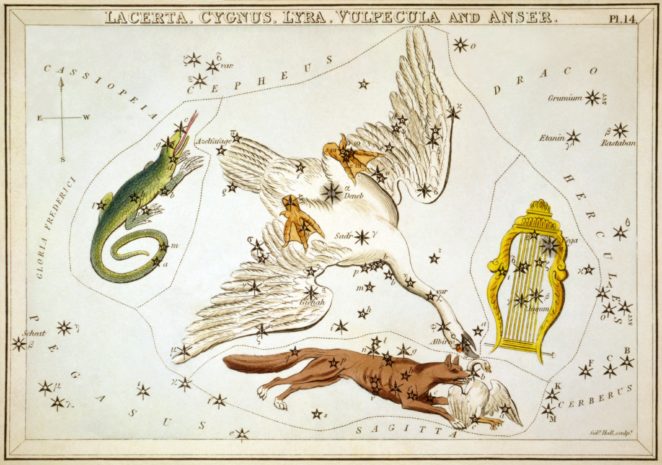
You may well have heard of Barnard’s Star, or possibly even
Plaskett’s Star, but Tabby’s Star? Its less memorable name is KIC 8462852. It
is an F-type main sequence star that is slightly larger and slightly hotter
than our G-type Sun. It is about 1,280 light years away from us, in the Cygnus
constellation.
Its name derives from Tabetha Boyajian, an American
astronomer who has been leading a team studying the star as part of a general
search for planets in orbit around distant stars, based on evidence derived
from the Kepler Space Observatory. Tabby’s Star has also been called Boyajian’s
Star, although that does sound a bit less friendly!
The reason why Tabby’s Star has excited interest is that its
“light curve” (an analysis of the light coming from a star over a period of
time) was not what was expected. The search for exoplanets depends on finding
light curves that indicate that a planet is passing in front of its star. The
light will dim for a period of time then return to normal after the planet’s
transit has ceased. This pattern will repeat every time the planet orbits the
star, and consistent data taken over a number of years will enable astronomers
to calculate the planet’s size, mass and distance from its star.
However, the data from Tabby’s star was all wrong. The
dimming that was observed was far from regular and was unpredictable, leading
to all sorts of speculation, including the idea that this was evidence of the
work of an alien civilization on the planet that had built a vast structure to
control the energy being received from its star.
One theory – advanced by a team of astronomers in Colombia –
dispenses with the aliens but proposes an explanation that is just as
intriguing, namely that the planet in question is similar to Saturn in that it
is surrounded by rings.
The theory begins with the notion that a ringed planet, when
transiting its star, would produce different intensities of dimming – less when
only the ring was in transit, more as the full disc of the planet moved across,
and then less again as the “back end” of the ring was all that was obstructing
the star’s light. On each transit the degree of dimming might change if the
angle of the ring was not the same – the planet may well not rotate in the same
plane as its orbit, as we know full well from the behaviour of our own planets.
It would probably take many orbits before a consistent pattern could be
deduced.
The Colombian astronomers modelled this theory based on the
supposed mass of the planet and its closeness to Tabby’s Star, estimated at
about one tenth the distance of Earth to the Sun. They found that the star
would have a gravitational tug on the rings, causing them to wobble and
producing even more irregularity to the light curve.
So the mystery of Tabby’s Star may have been solved. There
is no need to imagine a vast engineering project on the part of an advanced
alien civilization. All that is needed for the observed phenomena – it appears
– is a ringed planet the size of Neptune orbiting close to Tabby’s Star.
However, the jury is still out because this is not the only
theory that has been put forward to explain the mystery of Tabby’s Star.
© John Welford
No comments:
Post a Comment